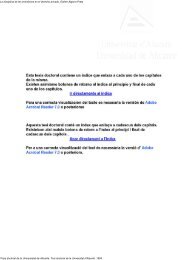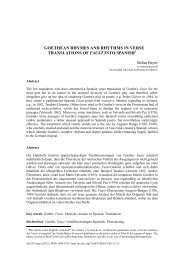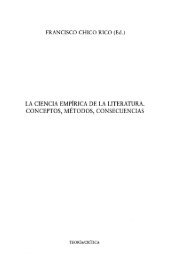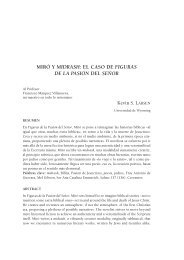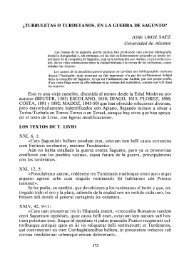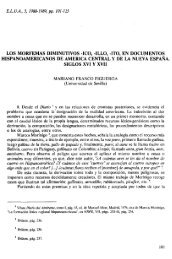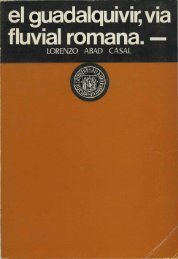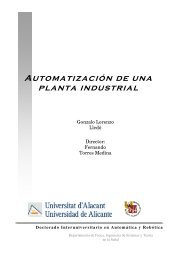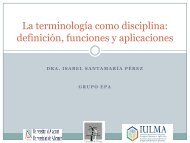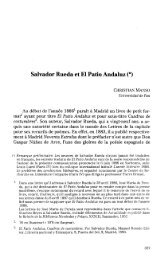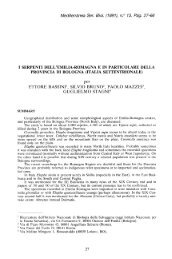ecological effects of marine protected areas empafish project ...
ecological effects of marine protected areas empafish project ...
ecological effects of marine protected areas empafish project ...
You also want an ePaper? Increase the reach of your titles
YUMPU automatically turns print PDFs into web optimized ePapers that Google loves.
EMPAFISH Booklet no. 1 Ecological <strong>effects</strong> <strong>of</strong> Atlanto-Mediterranean MPAs in the EU<br />
et al. 1995). The fish assemblage at each area was censused using the strip<br />
transect, the stationary visual census and the spatial census techniques. The<br />
estimated abundance and size <strong>of</strong> fish species were recorded on suitable<br />
boards. Fish abundance, community structure indices (d', H' and J') and a<br />
multivariate analysis <strong>of</strong> data were computed. Fish biomass was also estimated<br />
from the length-frequency distributions <strong>of</strong> fishes using length-weight<br />
relationships. Sparids characterized the fish assemblage in ARA while labrids<br />
were the most representative species in WRB and ERB. ARA displayed values<br />
<strong>of</strong> diversity indices, abundance and biomass significantly higher than those<br />
registered in SB and close to those obtained in POA and especially WRB and<br />
ERB. From our results it stems that the fish biomass and abundance in ARA<br />
are lower than those estimated in other artificial reefs in the Mediterranean<br />
Sea. These studies were an attempt to understand the role played by artificial<br />
reefs in influencing the composition <strong>of</strong> nekton assemblages in oligotrophic<br />
waters, such as those in the Southern Tyrrhenian Sea.<br />
A review <strong>of</strong> the efficiency and role <strong>of</strong> the Castellammare artificial reefs is<br />
reported by Badalamenti et al. (2000a) and D’Anna et al. (2000).<br />
� Traditional and experimental FADs<br />
An experimental bottom FAD, stretching 50 m 2 and composed <strong>of</strong> 36 buoyant<br />
polypropylene ropes frayed on the top, was deployed on a sandy area at a<br />
depth <strong>of</strong> 14m in the Gulf <strong>of</strong> Castellammare (NW Sicily) (D’Anna et al. 1997).<br />
The FAD was constructed at the aim to attract fish and to diversify the s<strong>of</strong>t<br />
bottom fish assemblage. In order to study the fish colonisation <strong>of</strong> the FAD we<br />
carried out 38 visual census counts over the July 1994 to September 1995<br />
period. Fish belonging to 22 taxa, including mainly sparids and labrids, were<br />
recorded during the survey. The most frequent and abundant species were<br />
Spicara maena, Serranus scriba Chromis chromis, Symphodus tinca, S.<br />
cinereus, Boops boops, and Seriola dumerili. Patterns <strong>of</strong> colonisation<br />
distinguished three main phases: Phase A (15 - 95 days after the FAD<br />
deployment) was characterised by a fluctuation <strong>of</strong> the species richness values,<br />
high dominance and low diversity. The main pioneer species were: Spicara<br />
maena, Balistes carolinensis, Seriola dumerili and Lithognathus mormyrus.<br />
Phase B (96 - 294 days) showed a decrease <strong>of</strong> abundance and increase <strong>of</strong><br />
diversity and evenness values. Phase C (295 - 414 days) diplayed an increase<br />
<strong>of</strong> number <strong>of</strong> species and abundance, mainly due to the recruitment <strong>of</strong> some<br />
juveniles <strong>of</strong> pelagic and nekto-benthic species. Statistical analysis detected<br />
quantitative differences between the fish assemblages <strong>of</strong> the upper and lower<br />
side <strong>of</strong> the FAD. Cluster analysis, performed on quantitative matrix <strong>of</strong><br />
abundance excluding species with a frequency <strong>of</strong> occurrence



